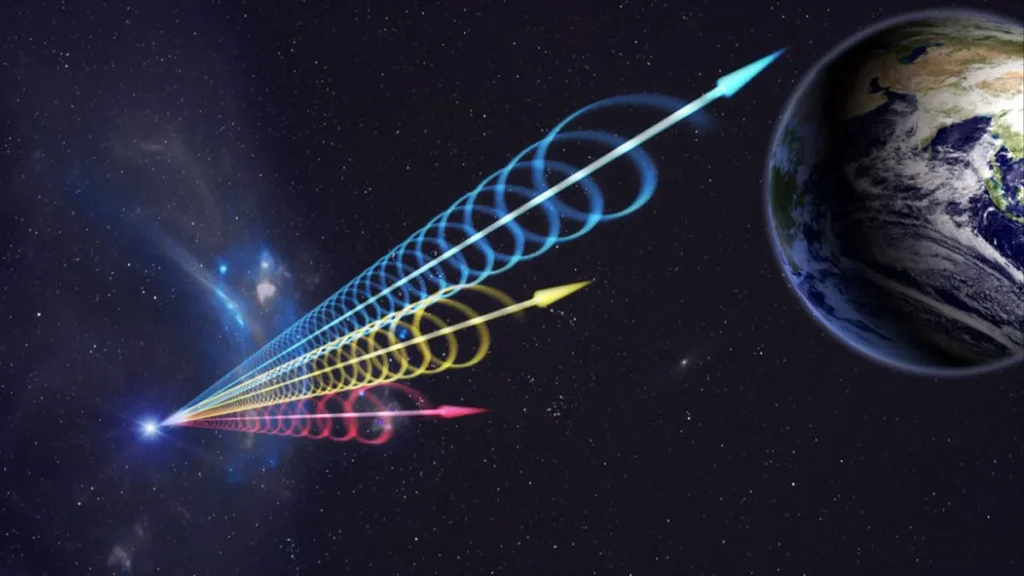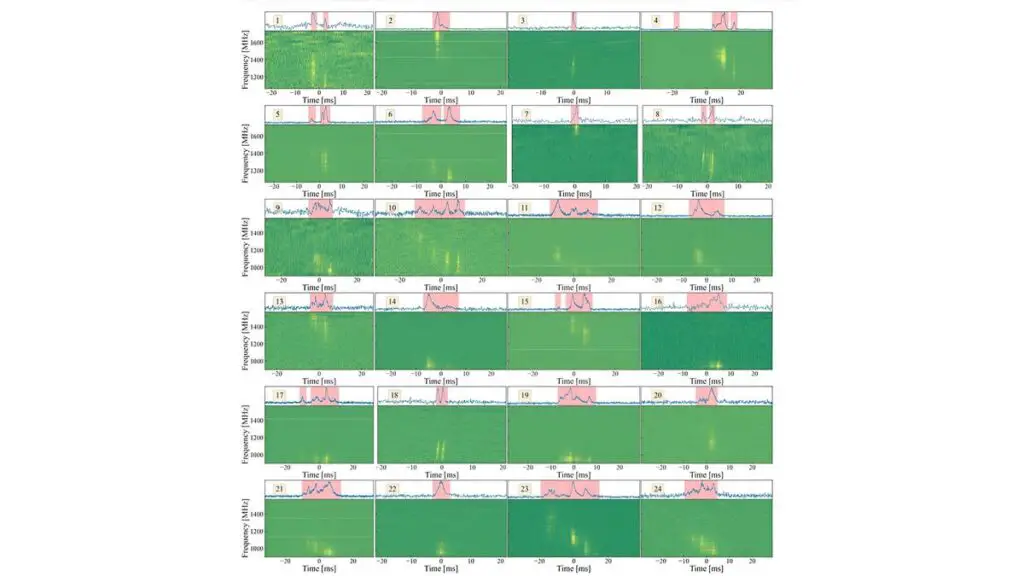In a remarkable observation, astronomers have detected a unique pattern in a repeating “fast radio burst” (FRB) that defies current understanding.

This discovery, made using the SETI Institute’s Allen Telescope Array (ATA), offers new insights into these mysterious millisecond-long flashes of light from beyond the Milky Way.
FRBs are known for their incredible energy output, capable of producing as much energy in a few seconds as the sun does in a year. They are believed to originate from powerful cosmic phenomena like neutron stars with intense magnetic fields, known as magnetars, or from cataclysmic events such as stellar collisions or the collapse of neutron stars into black holes. Adding to their enigma, some FRBs, known as “repeaters,” flash more than once from the same spot in the sky, while others appear only once before vanishing.
The focus of this new research is FRB 20220912A, a highly active repeating FRB. Over 541 hours of observation, the ATA captured 35 explosive outbursts from this FRB, revealing a fascinating shift in frequency across the radio wave spectrum. This shift developed into a pattern that mimics a “cosmic slide whistle,” a behavior never before seen in FRBs.
Lead study author Sofia Sheikh, a postdoctoral fellow at the SETI Institute, highlighted the significance of this discovery. The study, accepted for publication in the journal Monthly Notices of the Royal Astronomical Society, narrows down the source of FRBs to extreme objects like magnetars. However, no existing model can fully explain all the observed properties of FRBs, including this new pattern.

The bursts from FRB 20220912A were found to shift down in frequency, and when converted to musical notes, they resembled the descending toot of a slide whistle. This unique behavior allowed the team to identify a cutoff point for the brightness of bursts from this FRB, shedding light on its contribution to the overall cosmic signal rate.
Despite the pattern in frequency, the duration of the bursts and the intervals between them showed no clear pattern, indicating an inherent unpredictability in repeating FRBs. This unpredictability adds another layer of complexity to the already mysterious nature of these cosmic phenomena.
The study also demonstrates the versatility of the ATA, a telescope originally designed for the search for extraterrestrial intelligence. Its contribution to FRB research highlights the importance of new telescopes with unique capabilities in solving outstanding mysteries in astrophysics.
The discovery of this peculiar pattern in FRB 20220912A opens new avenues for understanding the origins and mechanisms of FRBs. It challenges astronomers to develop models that can account for these unexpected behaviors and brings us closer to unraveling one of the universe’s most intriguing puzzles.
As the study of FRBs continues to evolve, each new observation brings us closer to understanding these enigmatic bursts of cosmic energy. The “cosmic slide whistle” observed in FRB 20220912A not only adds a new piece to the FRB puzzle but also underscores the dynamic and often surprising nature of the universe we inhabit.
Reference(s): SETI.org, Research Paper

